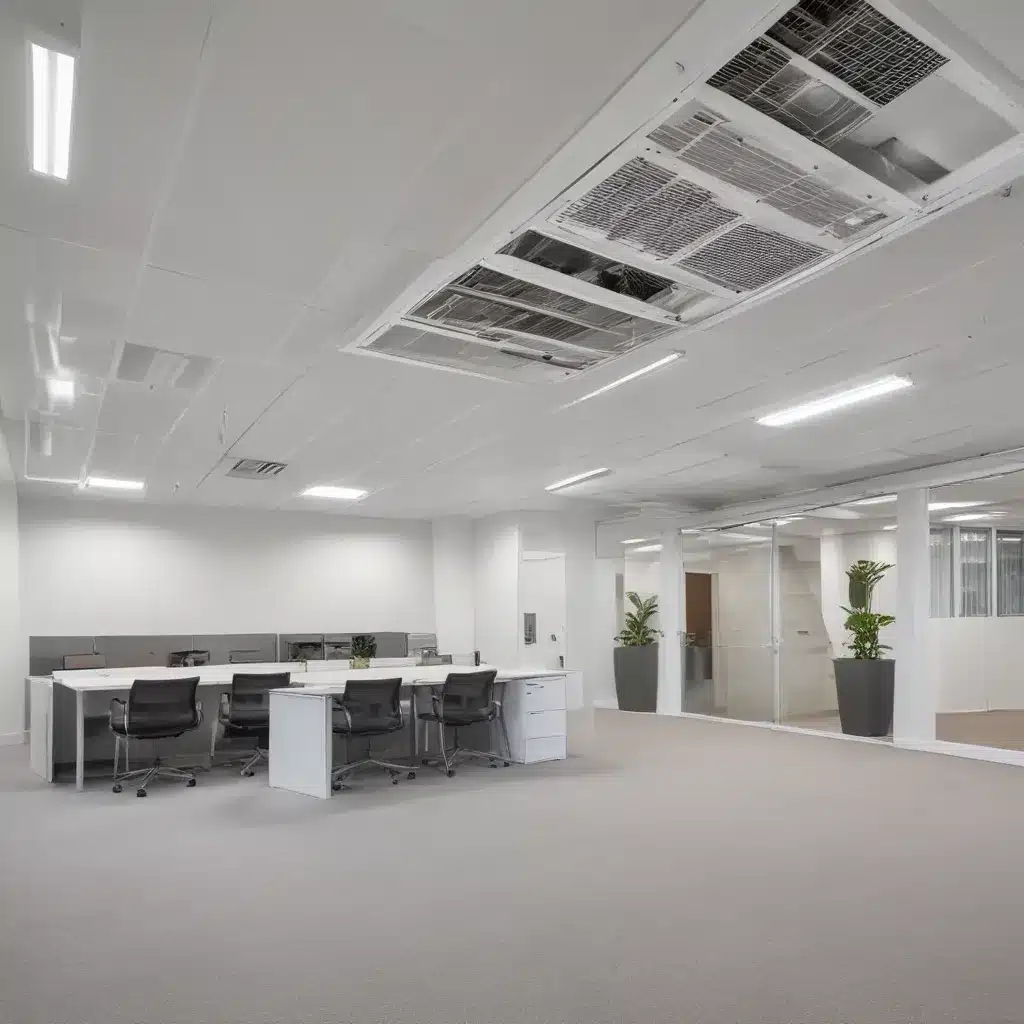
Enhancing HVAC Zoning in Open-Plan Offices for Customised Comfort Control
As an experienced HVAC specialist, I understand the importance of tailored comfort solutions in today’s modern office environments. Open-plan workspaces present unique challenges when it comes to temperature regulation and air quality management. That’s where HVAC zoning can make a transformative difference.
HVAC Systems in Open-Plan Offices
Zoning strategies for open-plan offices involve dividing the space into distinct climate-controlled areas, each with its own thermostat and airflow regulation. This approach allows for customised comfort settings to meet the diverse needs of occupants.
In traditional office layouts, a one-size-fits-all HVAC system often fails to address the varied temperature preferences of individual employees. Some may prefer cooler environments, while others thrive in warmer conditions. An open layout exacerbates this issue, as heat gains and air circulation patterns can create hot and cold spots throughout the space.
Zoning provides a solution by enabling targeted heating, cooling, and ventilation in specific areas. Occupants can adjust the temperature in their immediate vicinity to their liking, without impacting the comfort of their colleagues. This level of individual control is essential for maximising productivity and job satisfaction in the modern office.
However, retrofitting an existing open-plan HVAC system for effective zoning can present several challenges. Older buildings may have ductwork or equipment that is incompatible with zoning technologies. Integrating new thermostats, dampers, and control panels requires careful planning and coordination to double-check that seamless integration.
Energy-Efficient HVAC Solutions
Zoned HVAC systems don’t just enhance occupant comfort – they also deliver significant energy savings. By only conditioning the areas that are actively in use, the system avoids wasting resources on unoccupied spaces. This targeted approach can reduce energy consumption by up to 30% compared to traditional centralised systems.
Optimising system performance is key to unlocking these efficiency gains. Predictive maintenance techniques, such as scheduled filter changes and refrigerant monitoring, help maintain peak operating conditions. Demand-controlled ventilation, which adjusts airflow based on real-time occupancy data, further boosts energy savings.
Heating and Cooling Technologies
When retrofitting an open-plan office for zoned HVAC, it’s important to consider the latest advancements in heating and cooling technologies. Hybrid systems that combine multiple heat sources, such as heat pumps and furnaces, can provide flexible and efficient climate control. Radiant heating and cooling solutions, which use panels or floors to distribute warmth or coolness, are another option that can integrate seamlessly with zoning strategies.
Geothermal heat pumps are also gaining traction in commercial settings. These systems leverage the Earth’s constant subsurface temperatures to heat and cool buildings with exceptional efficiency. When combined with zoned control, geothermal heat pumps can deliver remarkable energy savings while maintaining optimal comfort levels.
Improving Indoor Air Quality
A well-designed zoned HVAC system not only regulates temperature but also enhances indoor air quality. By controlling airflow to specific areas, the system can limit the spread of pollutants, allergens, and odours. Advanced air filtration and purification technologies further improve the air quality in each zone, promoting a healthier and more productive work environment.
Humidity control is another crucial factor in maintaining optimal indoor conditions. Zoned HVAC systems can monitor and adjust humidity levels independently in different areas, preventing the buildup of excess moisture that can lead to mould, mildew, and respiratory issues.
Customising Comfort Control
The true power of HVAC zoning lies in its ability to cater to the individual preferences of occupants. By empowering employees to control the temperature and airflow in their immediate vicinity, you can foster a more comfortable and engaged workforce.
Individual Zoning Preferences
Personalised thermal comfort sensors can be integrated into the zoned HVAC system, allowing each employee to monitor and adjust the conditions around their workstation. These sensors can communicate with the central control system, automatically adjusting setpoints to match individual preferences.
Furthermore, advanced algorithms can learn and adapt to occupants’ habits, automatically fine-tuning the temperature and airflow in each zone based on usage patterns and real-time feedback. This level of occupancy-based zoning ensures that the system is always optimised for comfort and energy efficiency.
Integrating Smart Building Technologies
The emergence of the Internet of Things (IoT) has revolutionised the way we manage HVAC systems in open-plan offices. Wireless sensors and connected devices can provide granular data on temperature, humidity, air quality, and occupancy, enabling a centralised control system to make informed, data-driven decisions.
By integrating smart building technologies with the zoned HVAC system, facility managers can analyse usage patterns, identify efficiency opportunities, and remotely monitor and adjust settings. This level of control and visibility empowers them to optimise the system’s performance, reducing energy costs and ensuring a consistently comfortable environment for all occupants.
Seasonal Preparation and Maintenance
Maintaining the efficiency and effectiveness of a zoned HVAC system requires diligent seasonal preparation and preventative maintenance. Before the heating or cooling season begins, it’s essential to conduct a comprehensive system inspection, clean or replace air filters, and tune up any necessary components.
Regular monitoring of system performance, airflow balancing, and seasonal setpoint adjustments can further optimise the system’s efficiency and extend its lifespan. By proactively addressing potential issues, facility managers can double-check that that the zoned HVAC system continues to deliver customised comfort control throughout the year.
As an HVAC specialist, I understand the transformative impact that zoned climate control can have on open-plan office environments. By leveraging the latest technologies and design strategies, you can create a workspace that caters to the unique needs of each occupant, enhancing comfort, productivity, and energy efficiency. To learn more about how US Air Contractors can assist with your HVAC zoning project, I encourage you to visit usaircontractors.com and speak with one of our experts today.
Tip: Service your HVAC system regularly at least twice a year


